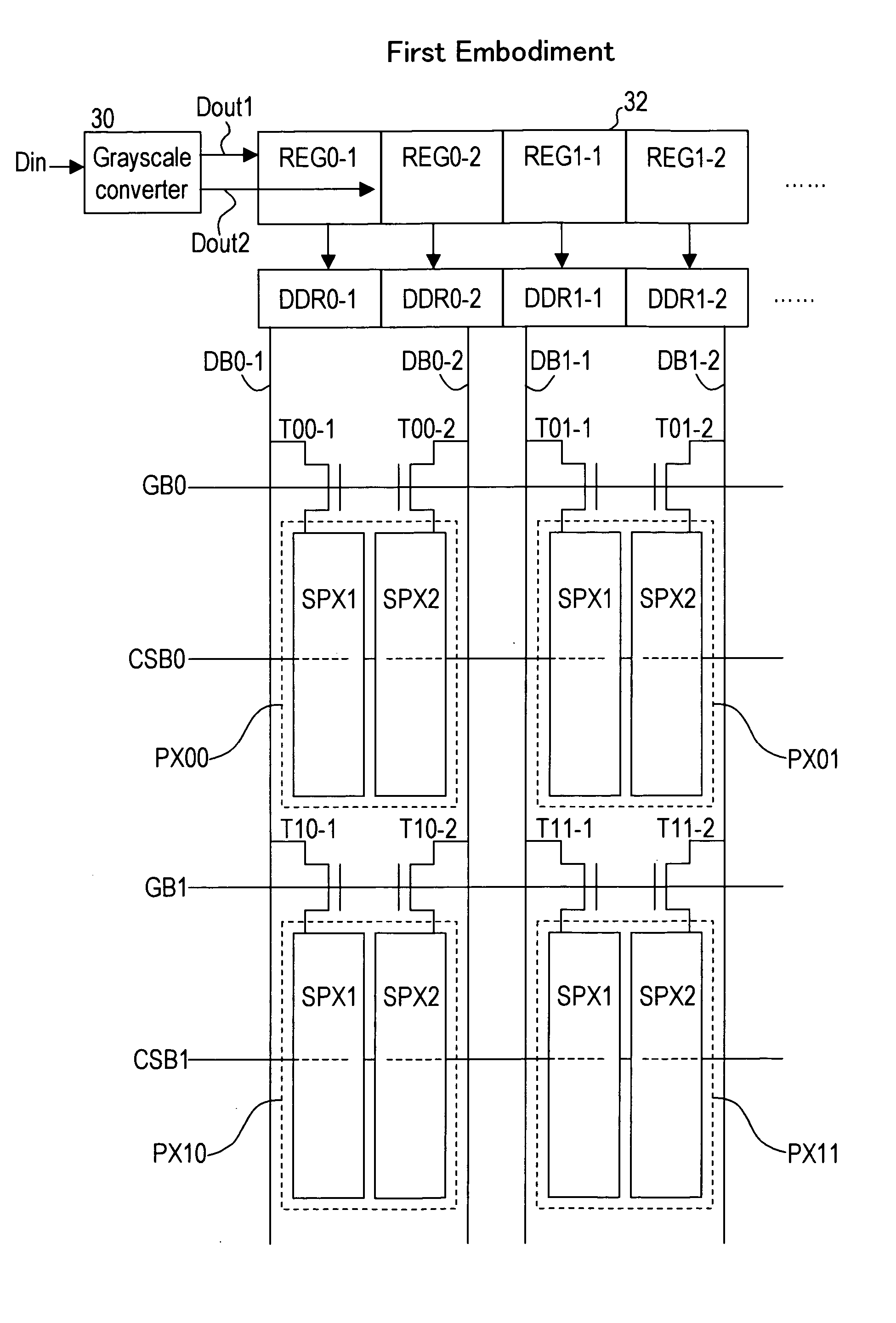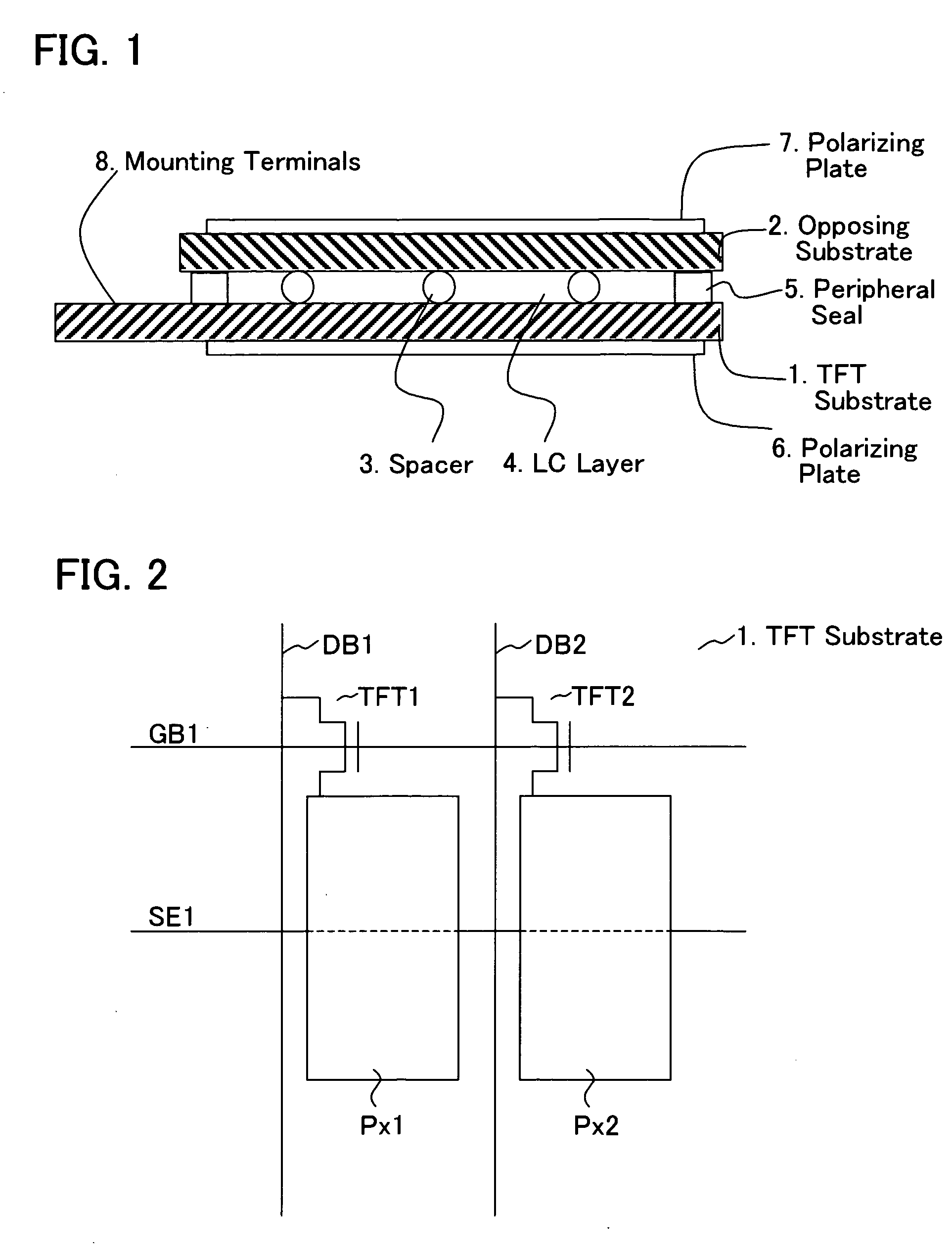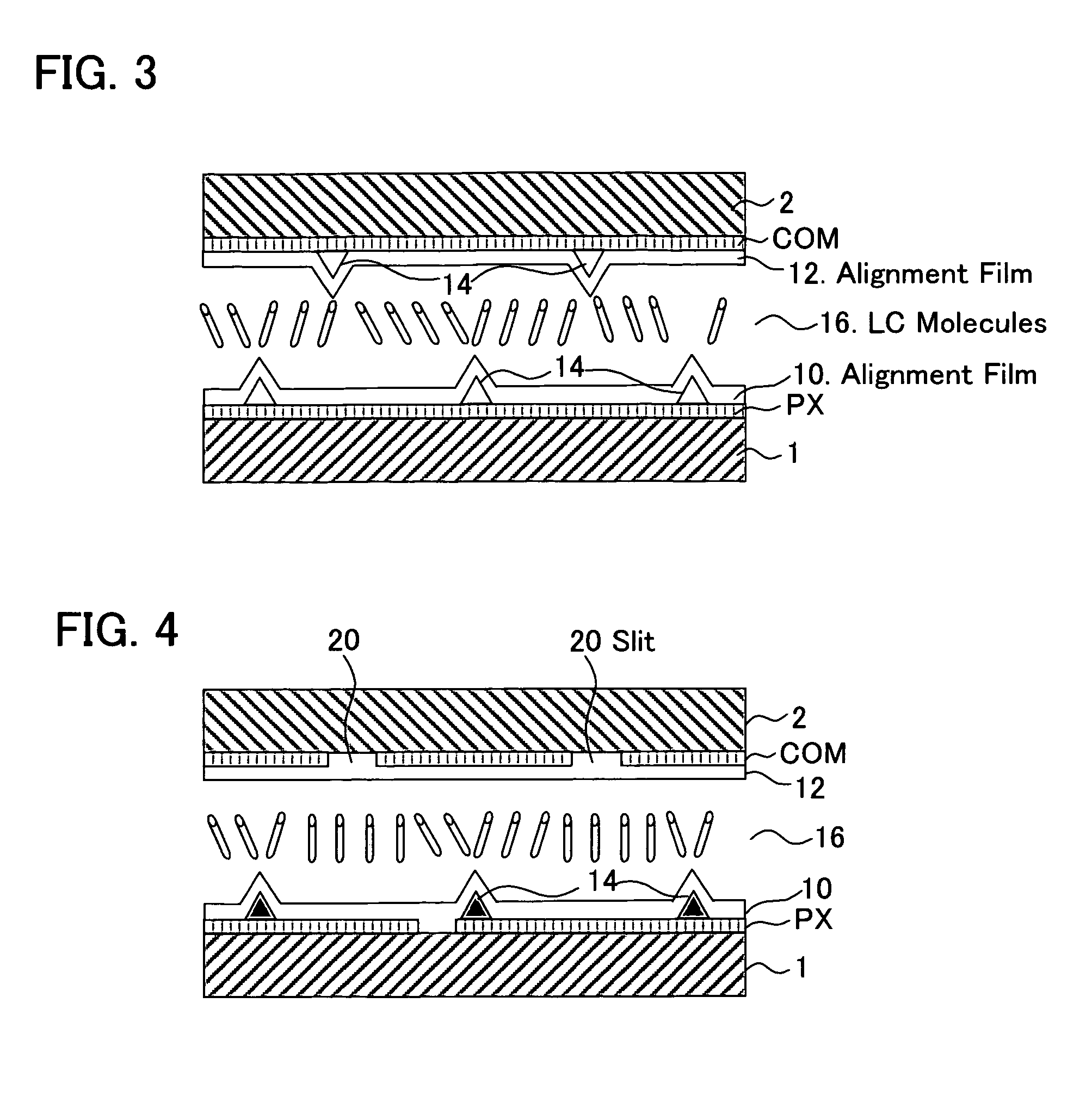Liquid crystal display device with improved viewing angle characteristics
a liquid crystal display and viewing angle technology, applied in the direction of counting mechanisms/objects, instruments, computing, etc., to achieve the effect of improving the viewing angle characteristics and broad viewing angle characteristics
- Summary
- Abstract
- Description
- Claims
- Application Information
AI Technical Summary
Benefits of technology
Problems solved by technology
Method used
Image
Examples
first embodiment
[0099]FIG. 10 is a view of a liquid crystal display device in a first embodiment. In this embodiment, a plurality of subpixel electrodes, for example first and second subpixel electrodes SPX1, SPX2, are provided in each of the pixels PX00, PX01, PX10, PX11 arranged in a matrix in the MVA type liquid crystal display panel. Thin film transistors Tij-1, Tij-2 (ij=00, 01, 10, 11) are provided, as switching means, to the first and second subpixel electrodes SPX1, SPX2. Also, a pair of data bus lines DB0-1, DB0-2 are provided, to which the thin film transistors T00-1, T10-1 and T00-2, T10-2 respectively of the pixels PX00, PX10 arranged in the vertical direction in the first column are connected; and a pair of data bus lines DB1-1, DB1-2 are provided, to which the thin film transistors T01-1, T11-1 and T01-2, T11-2 respectively of the pixels PX01, PX11 arranged in the vertical direction in the second column are connected. These pairs of data bus lines DB0-1, DB0-2 and DB1-1, DB1-2 are dri...
second embodiment
[0134]FIG. 25 shows the relation between input grayscale and luminance in the liquid crystal display device of a second embodiment. The configuration of the liquid crystal display panel of the second embodiment is similar to that of the first embodiment; pixel electrodes are divided into a plurality of subpixel electrodes, to each of which a data voltage is applied corresponding to an output grayscale signal resulting from grayscale conversion of an input grayscale signal. In the first embodiment, the first subpixel electrode was made small, and the second subpixel electrode was made large. That is, the area ratio of the first and second subpixel electrodes was made 1:2, 1:3, or similar. In this case, a voltage was applied to the first subpixel electrode corresponding to a first output grayscale signal Dout1 which rises to the maximum grayscale value from the minimum grayscale value in the low grayscale region of the input grayscale signal, while a second output grayscale signal Dou...
third embodiment
[0145]FIG. 31 is a schematic diagram showing an example of the configuration of subpixel electrodes in a third embodiment. In this example, each pixel is divided into a first and second subpixel electrode SPX1, SPX2, and combinations of area ratios of 1:2 and 1:3 are intermixed. That is, in the row direction, pixels PXa with an area ratio of 1:3 and pixels PXb with an area ratio of 1:2 are arranged in alternation. In this case, two data bus lines may be provided for each column, and there may be two gate bus lines in each row for one data line per column.
[0146] As shown in the luminance characteristic diagram of FIG. 18 in the first embodiment, when a high-luminance output grayscale signal which rises to the maximum grayscale value in a low-input grayscale region is applied to the small-area first subpixel electrode, and a low-luminance output grayscale signal which rises from the minimum grayscale value in a high-input grayscale region is applied to the large-area second subpixel ...
PUM
 Login to View More
Login to View More Abstract
Description
Claims
Application Information
 Login to View More
Login to View More - R&D
- Intellectual Property
- Life Sciences
- Materials
- Tech Scout
- Unparalleled Data Quality
- Higher Quality Content
- 60% Fewer Hallucinations
Browse by: Latest US Patents, China's latest patents, Technical Efficacy Thesaurus, Application Domain, Technology Topic, Popular Technical Reports.
© 2025 PatSnap. All rights reserved.Legal|Privacy policy|Modern Slavery Act Transparency Statement|Sitemap|About US| Contact US: help@patsnap.com



